The Wisdom of the Grand
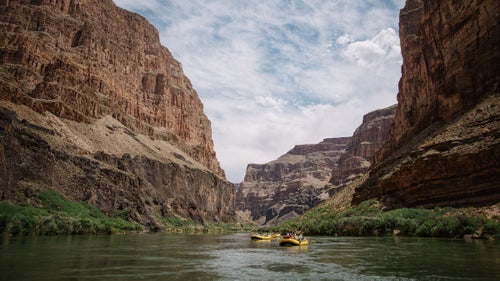
Every National Park has something to say, its own distinct tenor, its own singular lessons to impart. But of all our national treasures, perhaps none has taught us more—about our history, about ourselves, about the importance of preserving wild places—than the Grand Canyon. Anyone who floats through the great abyss comes away with a new perspective, a sense of awe, and some newfound wisdom. And for those who have spent large amounts of time in the Canyon? They come away with lives that are forever changed.
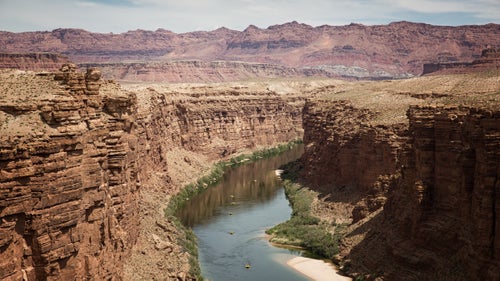
“What’s really neat about the Grand Canyon is that there’s nothing you can’t teach about geology with a little creativity. If someone wants to know about the types of rock, just hunt through a pile of gravel and you have igneous, sedimentary, and metamorphic rocks right there. I prefer the bottom of the canyon. You see the slot canyons, get a sense of the processes that forced and shaped it, and the grandness of it. Over the course of a rafting trip, you go through a huge swath of geologic time. You get to touch the rocks. Just get in the raft and the river will take you through it.” —Dr. Alan Gishlick, Bloomsburg University, veteran Grand Canyon geology trip leader

“Even at first sight, if you take a good long look, the Grand Canyon may claim more of your life than you can afford.” —Martin Litton, conservationist, crusader, Sierra Club board member, and father of commercial river guiding in the Grand Canyon
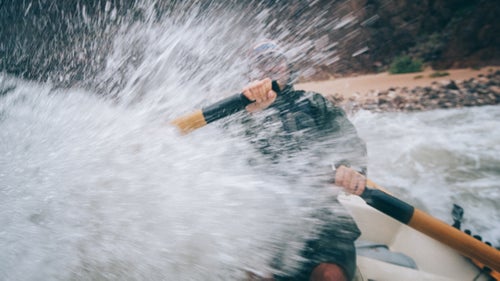
“What I’ve learned is that guiding is a profession that fits some peoples’ personalities and not others. It’s very much a real job. There is a point in the career where the idea of it being this cool thing wears off. Either the clients start driving you crazy and you quit, or you realize what it means to be a professional guide. It’s demanding. There’s shitty weather and tough people. But the canyon and river brings people together in ways you don’t see in regular life. It’s the great equalizer. You realize most people are there for the right reasons. Guiding is acceptance, tolerance, and humility, and that just comes with time.” —Nick Grimes, veteran dory guide for O.A.R.S, the first exclusively oar-powered rafting company permitted to operate trips on the Colorado River through the Grand Canyon
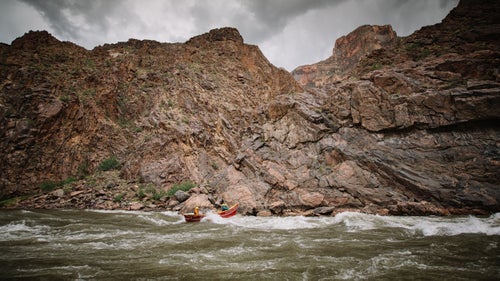
“I had probably camped twice in my life when Martin Litton invited me to go on a river trip in 1970 to wash pots and pans and be a cook’s assistant. Then he asked me to row a dory. On my sixth day, behind the oars we tipped over and hit a rock and damn near broke the boat in half. We pulled ashore and inspected it. I was expecting Martin to take my head off. He said, ‘JB, these boats have been banged up like this before,’ then he took a long pause. ‘Just not all at once.’” —John Blaustein, renowned Grand Canyon photographer, river guide, and author of the 1977 classic, The Hidden Canyon: A River Journey
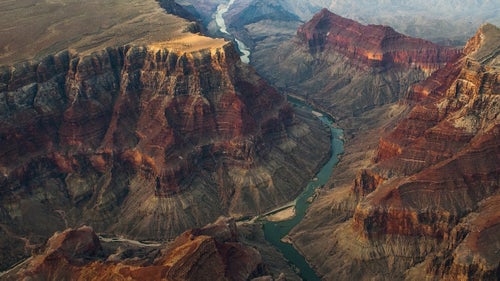
“Personally, the Colorado River has connected me to many things, many people and many remarkable places. It has bonded me with my father who helped me fly the length of the river to document its flow. It connected me to other salty river rats, fishermen, filmmakers, farmers, fast ski runs, and passionate souls trying to protect this body of snow-melt that offers life for 36 million people and thousands of critters across seven States and two countries. The river also connected, or even grounded me to the fields which I grew up irrigating with the river’s headwaters on our family ranch.” —Pete McBride, writer, photographer, film maker, and author of The Colorado River

“I don’t really have many rules on the river. It’s more like a philosophy. I tell clients not to say any of the D words, like drowning, or death. We’re trying to live this relationship with the river, and we don’t want to make her upset. If you say something wrong, she’s probably going to make you fall out of the boat.” —John Shockley, veteran O.A.R.S dory guide
![“By stripping most of my pride, my apprenticeship [as a river guide] has laid bare one of the more intriguing paradoxes of the Grand Canyon: the fact that this place has the power to render a person not only profoundly diminished but also radically expanded, often in the same breath. Of the many things that the canyon and the river supposedly offer, this may be the purest of them all.” —Kevin Fedarko, author of The Emerald Mile, the incredible story of the fastest trip ever attempted through the Grand Canyon, from a feature he wrote for Outside Magazine entitled “They Call Me Groover Boy”](https://cdn.outsideonline.com/wp-content/uploads/2015/10/14/yeti-gallery-night-sky_h.jpg?width=500&enable=upscale)
“By stripping most of my pride, my apprenticeship [as a river guide] has laid bare one of the more intriguing paradoxes of the Grand Canyon: the fact that this place has the power to render a person not only profoundly diminished but also radically expanded, often in the same breath. Of the many things that the canyon and the river supposedly offer, this may be the purest of them all.” —Kevin Fedarko, author of The Emerald Mile, the incredible story of the fastest trip ever attempted through the Grand Canyon, from a feature he wrote for Outside Magazine entitled “They Call Me Groover Boy”
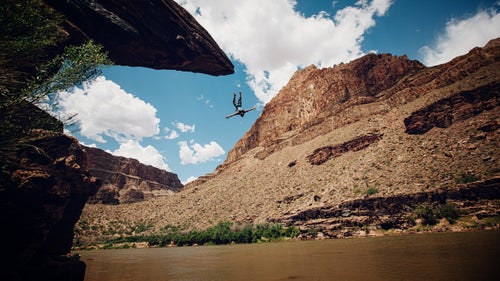
“When my dad, who got into guiding in the mid-60s, took me down the river for the first time in the late 1980s, it just changed my life. It was so meaningful to see the canyon. I got to see my dad in his element and it struck me how much it meant to him. I wanted to get involved. It affected me so much as I grew up, there’s hardly a day I didn’t think about it. Sometimes when kids are young, you don’t think they’ll be affected by things. But you never know. My kids are 3 and 9 months. I hope we can have a lot of good experiences together too.” —Latimer Smith, Western River Expeditions guide
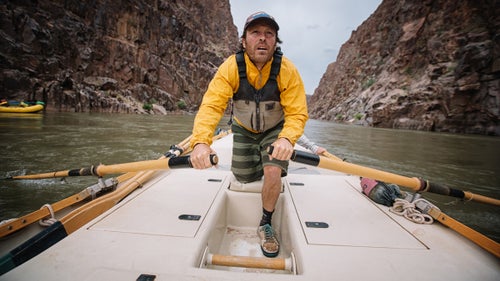
“You pay your dues to row a dory. I lived for five years in a van fixing boats in the warehouse and ran baggage boats for 2 years to get a chance, and I’d already been guiding rivers around the world for 10 years before that. I hear one in a thousand river guides in North America end up in the Grand Canyon. I wouldn’t want to have to do it again, but it was the path I chose. If I wasn’t rowing dories, if I was on a raft, I don’t know if I would have stayed long term. Many dory guides last till they are 65 or older.” —Rio Hibarger, veteran O.A.R.S dory guide